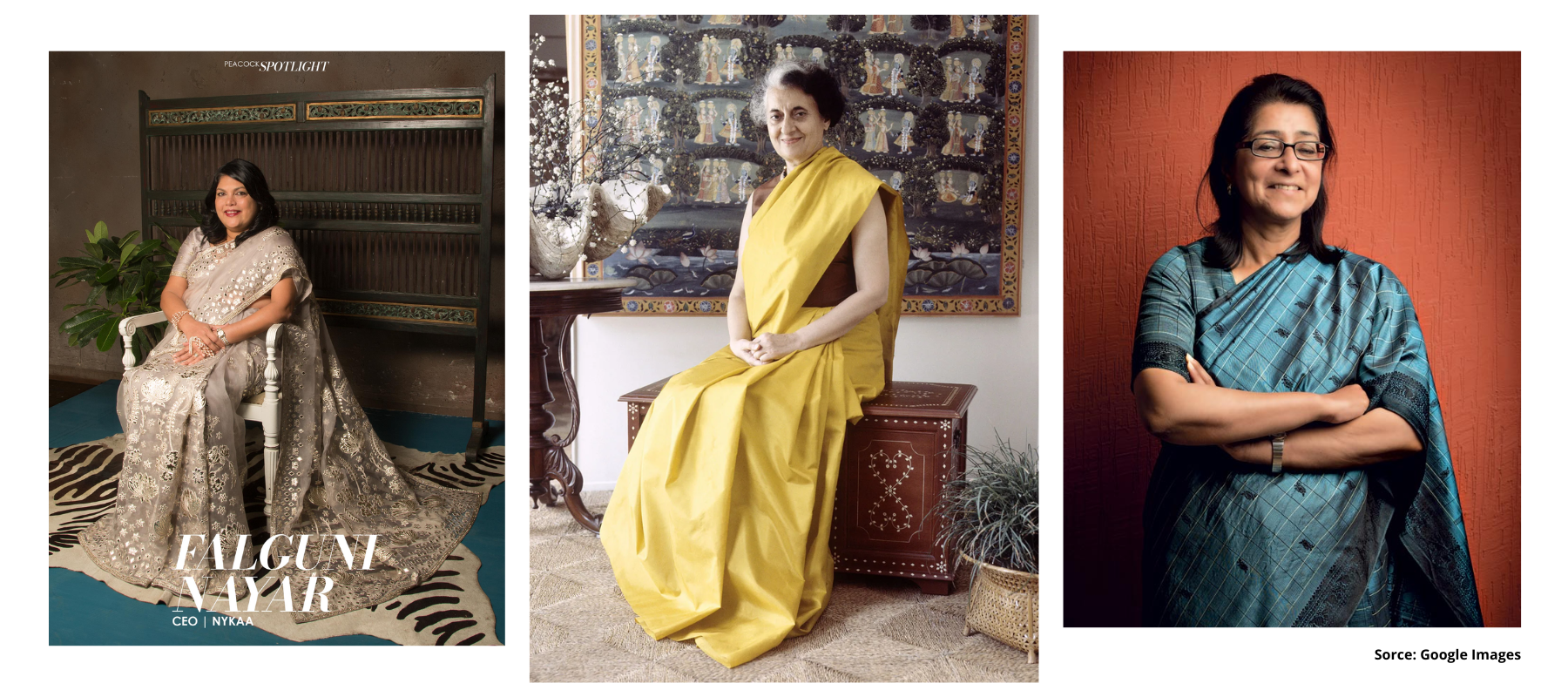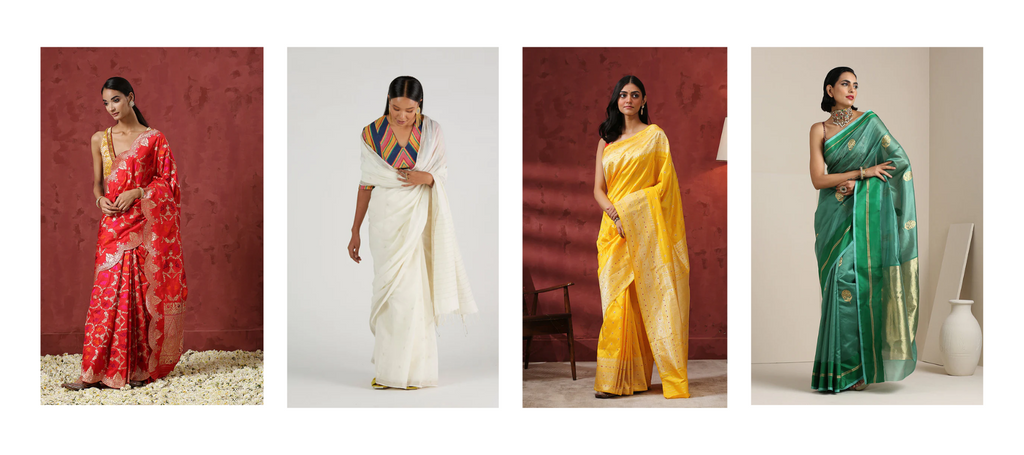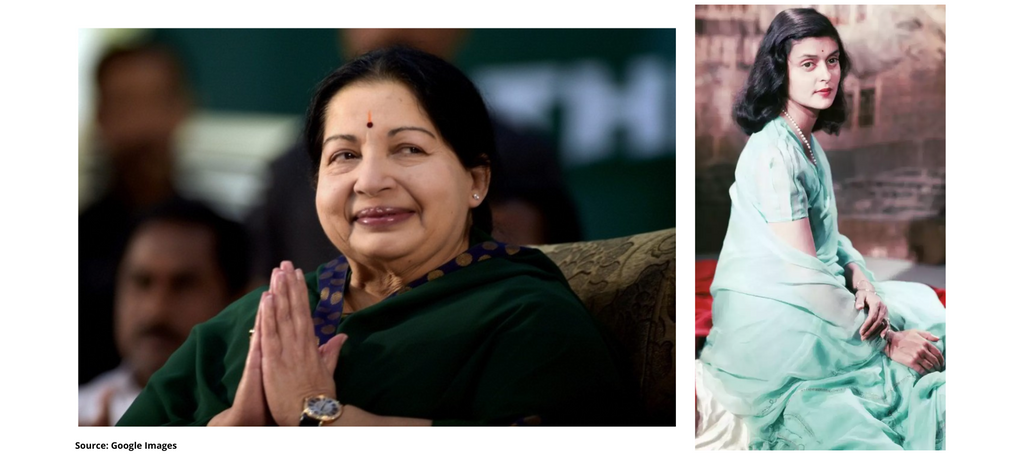It isn’t wrong to say that sarees are the most versatile pieces of fabric bestowed upon humankind. There are so many elements that make it a magical object of sorts; they are luxurious and yet maintain their simplicity. They come in rich zari and weave the tapestry of great historical significance in its weaves. A saree dates back to the Indus valley civilization and proves its efficacy even after millennia. The saree has adapted its identity: a fabric that moulds itself according to the wearer. It’s wrong of us to consider a saree as a domesticated garment meant to be worn by only a homemaker; it’s wrong to think of a saree as even a tedious garment. There is an unspoken strength in the saree, each different from the other. Sarees are the definition of power dressing. They are larger than life, and when wrapped around powerful women, it transforms into primordial energy – the shakti. With the advent of social media, sarees online have found a different meaning. Gone are the days when only married women donned sarees; they are now worn by women from all walks of life, despite their relationship or societal status.(Credit: http://www.sosaree.in/2014/02/indira-gandhisaree-inspiration.html)
We’ve seen powerful women don sarees and command the world under them, from our goddesses to heads of organisations. Indira Gandhi, India’s first and only woman Prime Minister, wore sarees with such efficiency and created ripples in her era of prime ministership. Corporate giants like Falguni Nayar, Naina Lal Kidwai wear sarees and slay it while building empires under their tutelage. These women have emblematize the saree into a superpower. They are stylish, they are successful, and there is nothing in this world that can stop them.
A saree is almost a spiritual garment; in many temples, sarees are offered to the venerated goddess; these sarees are then considered auspicious and worn by women on special occasions. Goddesses like Kali, Bhairavi and others exude an energy that an ordinary man cannot even imagine, yet they lend their power to us through this garment- the saree. We’ve heard hair-raising stories of goddesses slaying powerful demons in our mythologies. In real life, we’ve seen our Indian mothers take down real-life demons like a child's illness or the back-breaking responsibilities of a household and still emerge glorious in their well-pleated and sharply worn sarees. A saree is truly a magical object. It just makes the wearer beautiful. There is genuinely something mesmerising about wearing a saree. We’ve seen women dance, woo and even do somersaults in this gorgeous garment.
Sarees are also symbolic of many things. Red sarees symbolise auspiciousness, yellow signifies spring, green exudes abundance, and white is the colour of purity. We’ve been blessed with a garment that comes with a rich history, and it is deeply embedded in the culture of the Indian subcontinent. There are over eighty ways to wear a saree, and such is its versatility. The saree adapts itself to the place's history, culture and topography and becomes a bespoke part of daily lives. There is nothing about the saree that is mundane. Its adaptability is its superpower. Alluring Handwoven Sarees to Upgrade the wardrobe.
We’ve seen heroines sizzle the silver screens in rich drapes, we’ve seen politicians bring forth massive changes with their elegant and muted coloured sarees, we’ve seen girls transform into young women as they purchased their new sarees for farewells, and we’ve seen sarees be an inexplicable part of our lives. These cultural phenomena have percolated into societies, and we see women emulate influential leaders. They emulate the style of the saree and the aura of influence; they carry their drapes with chutzpah and exude confidence and femininity. Whether it be an heirloom or a new piece from saree shopping online, they are a part of us. While superheroes like superman and batman have their capes, the saree is essentially a cape wrapped around a woman’s body. It represents her silent strength and her endurance. There is power in a saree.
While a saree is a draped garment and represents the strength of a woman, it is also a canvas of the weavers and artisans. Sarees have employed generations of weavers who have used talent, precision and skill that are unmatched and unique to sarees. The power in the sarees comes through the nimble and skilled fingers of these weavers; they hunch over and work endlessly, and their knowledge is often centuries old. Just like a daughter accepts her mother’s saree as an heirloom, the weavers receive their knowledge in the heirloom.[Credits: https://lapolo.in/blog/legendary-life-rajmata-jaipur-gayatri-devi]
In India, every state represents a different type of saree, and every state holds women who are powerful and strong. From Rajasthan comes Maharani Gayatri Devi in her delicate chiffons; we have the late chief minister of Tamil Nadu Jayalalithaa, who had a collection of rich silk sarees and various examples that will prove how saree and powerful women are connected to one another. Their bond is like the delicate silk strand that only grows richer with time.
Saree shopping is a beautiful opportunity for all women in the country, and it’s time to unleash your desires and purchase a piece that will be an integral part of your wardrobe. With the advent of social media and e-commerce, buying sarees online has become an easy task. At WeaverStory, it is crucial to keep this power, strength and history alive by reviving complex weaving techniques and presenting the world with exquisite sarees that promise to become an integral part of every women’s wardrobe. Whether viewing sarees online or at the WeaverStory Store, the experience is like none other. It’s often said that behind every successful man is a woman; however, behind every successful woman is a saree weaved with care and knowledge passed down from generations. Wearing a saree represents our heritage and values, pushing our personal ambitions and creating rippling changes in the world. A saree can be simple or an exquisite piece, yet at its foundation, it is symbolic of strength, patience and power.
Author: Uma Shekhawat








